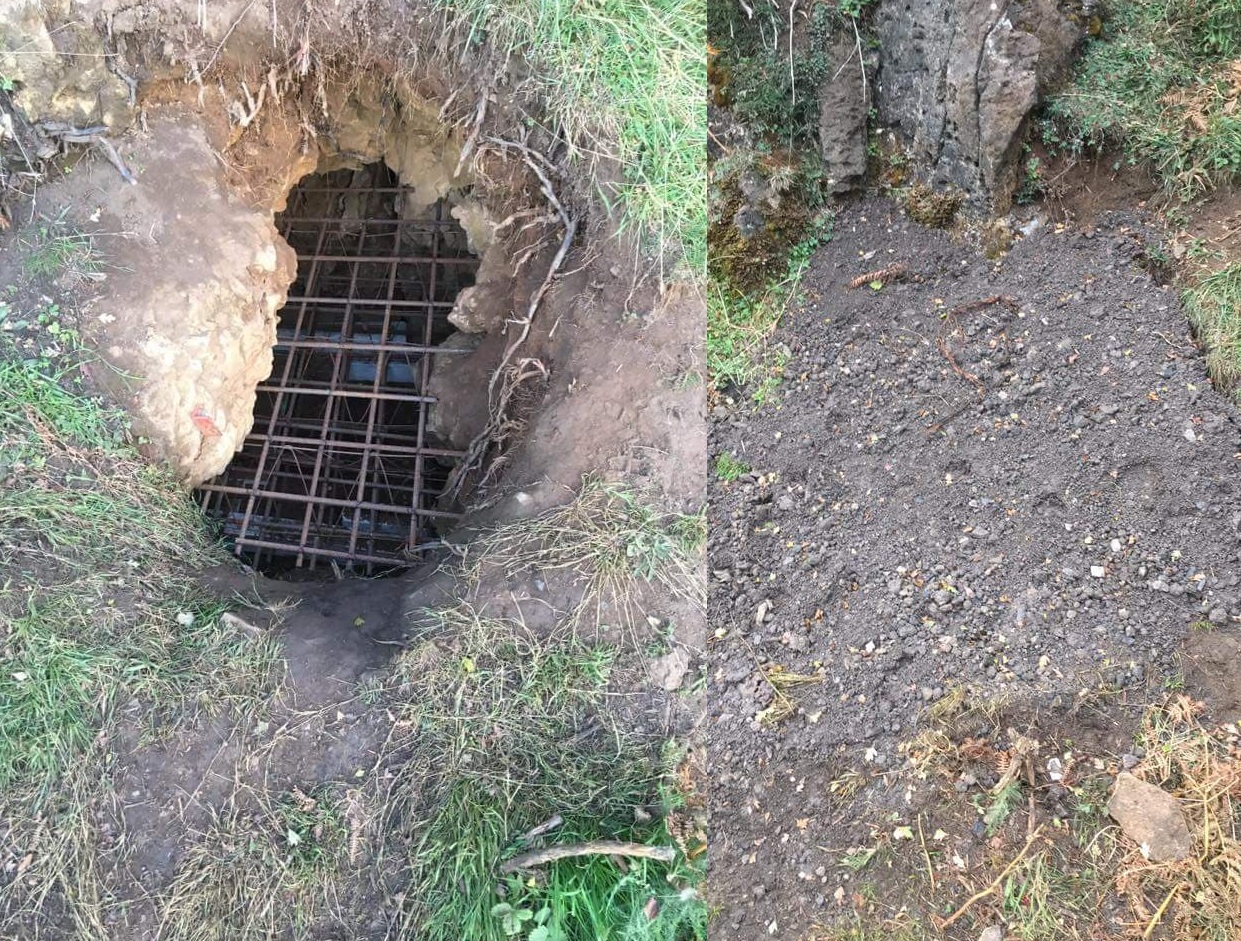
The Ogof Draenen landowners have spoken for the first time following Cadw’s announcement of the closure of a controversial access into the cave system.
The statement from Peter Jones and Brian Lewis of Pwlldu Conservation says: “From the outset it had been our wish that this hole, known as Twll Du, was closed permanently and with no access for cavers into the system below.
“Open access land has additional responsibilities for a caves landowner including the minimisation of risk to the public and other users. The location of this hole was of particular concern due to its closeness to a well-used path for walkers, and their dogs, and the danger it posed to grazing livestock, in addition to the long term affect on the scheduled ancient monument.
“The wider caving community has benefited from nearly 20 years of free access to Ogof Draenen as a result of the license between us and the Pwll Du Cave Management Group (PDCMG) with regard to the management of access to the cave system and its conservation for the benefit of current and future generations of cavers.
“We find it hard to understand how having multiple entrances into the cave system will aid conservation.”
Dr Amelia Pannett, Cadw’s field monument warden, confirmed that this entrance to the caving system had been permanently sealed earlier this month following fears that the Hills Tramroad, one of Wales’s key monuments, had been damaged. It lies within the Blaenavon Industrial Landscape world heritage site.
She said: “The unauthorised access made into the Ogof Draenen caving system had damaged a section of this protected monument and destabilised the structure of the surrounding tramroad. Located immediately adjacent to a popular footpath, the excavated hole was clearly dangerous, being around one metre in diameter and leading to a vertical drop of over 20 metres.
“The work was completed on 5th October with the hole filled with a mix of concrete and steel bracing to stabilise the ground, preserve the monument and safeguard walkers who use the footpath.
“The modern materials used to fill the hole now form part of the wider protected monument and it is an offence to undertake any works, damage or destroy any part of the monument, including the closure, without Cadw’s consent. As you will know, any such action could result in a criminal prosecution.”
Cadw say they had liaised with the landowner, Brecon Beacons National Park Authority, Torfaen County Borough Council, Natural Resources Wales, Gwent Police, Pwll Du Cave Management Group and the Cambrian Caving Council before the entrance was sealed.
Dr Pannett added: “The works were undertaken with advice from Natural Resources Wales and followed a series of bat surveys that concluded that bats were not using the hole to access the caving system. This was confirmed by a further survey carried out immediately prior to the works commencing on 1st October, and therefore no bat licence was required.
She said that Gwent Police are still investigating the matter. “Cadw have provided all the information that we were asked for and are co-operating fully with the investigating officer. We are confident that we followed all necessary procedures to establish whether bats were using the illegally excavated hole or not prior to the works being carried out. We are hopeful of a resolution to this matter soon.”
A spokeswoman for Gwent Police confirmed that they had received a report of criminal damage. She added: “Officers have subsequently received a report of a bat roost inside the cave. At this time, enquiries are ongoing into both allegations and the relevant surveys are being conducted to ensure the safety of any bats located.”
